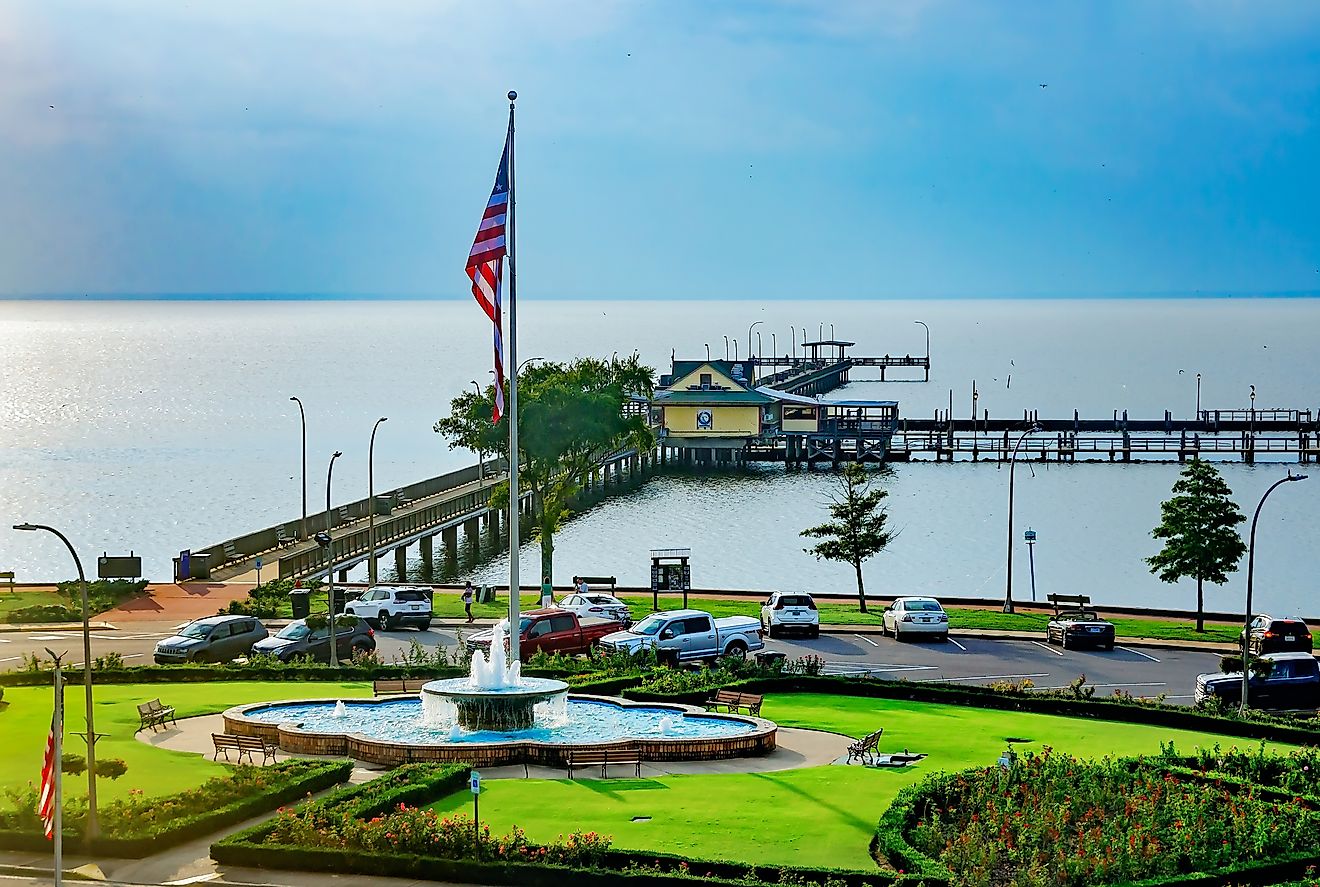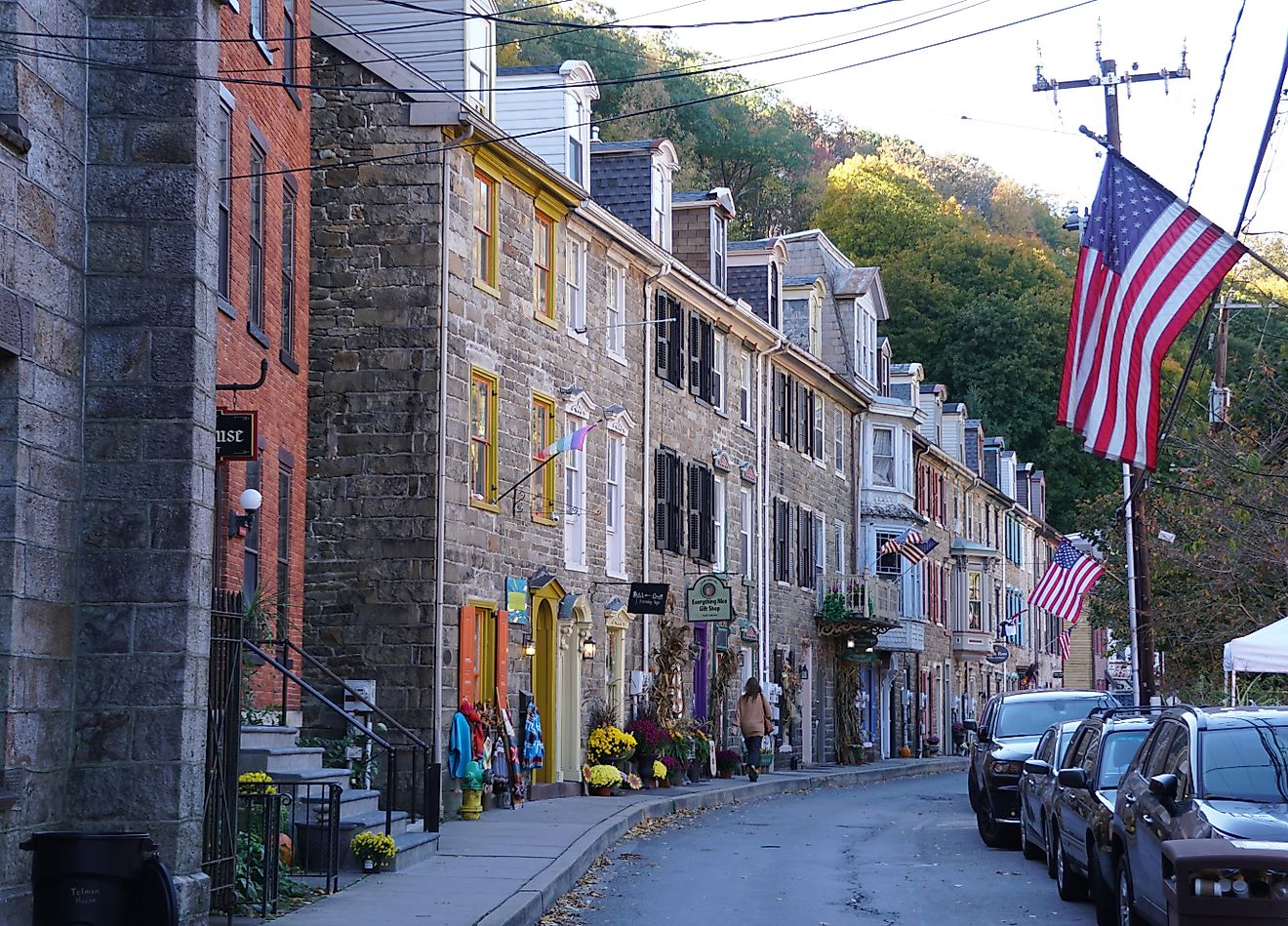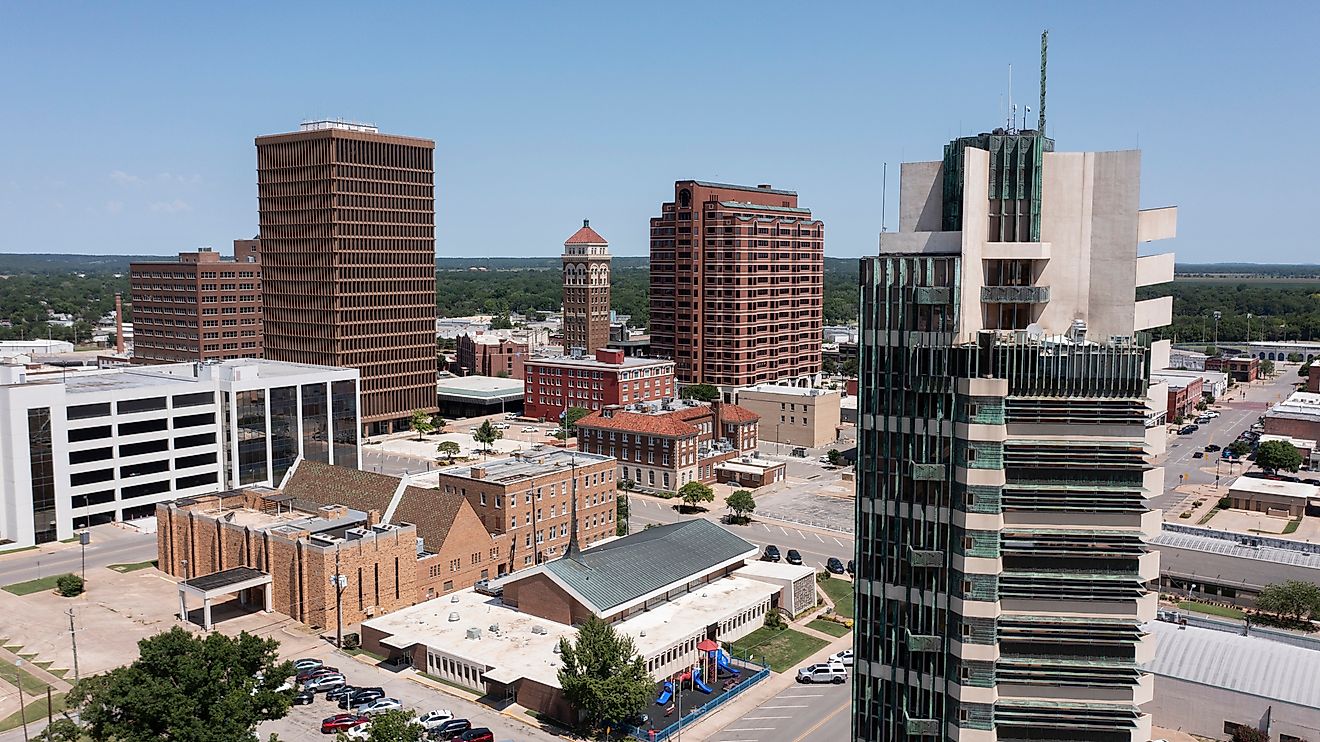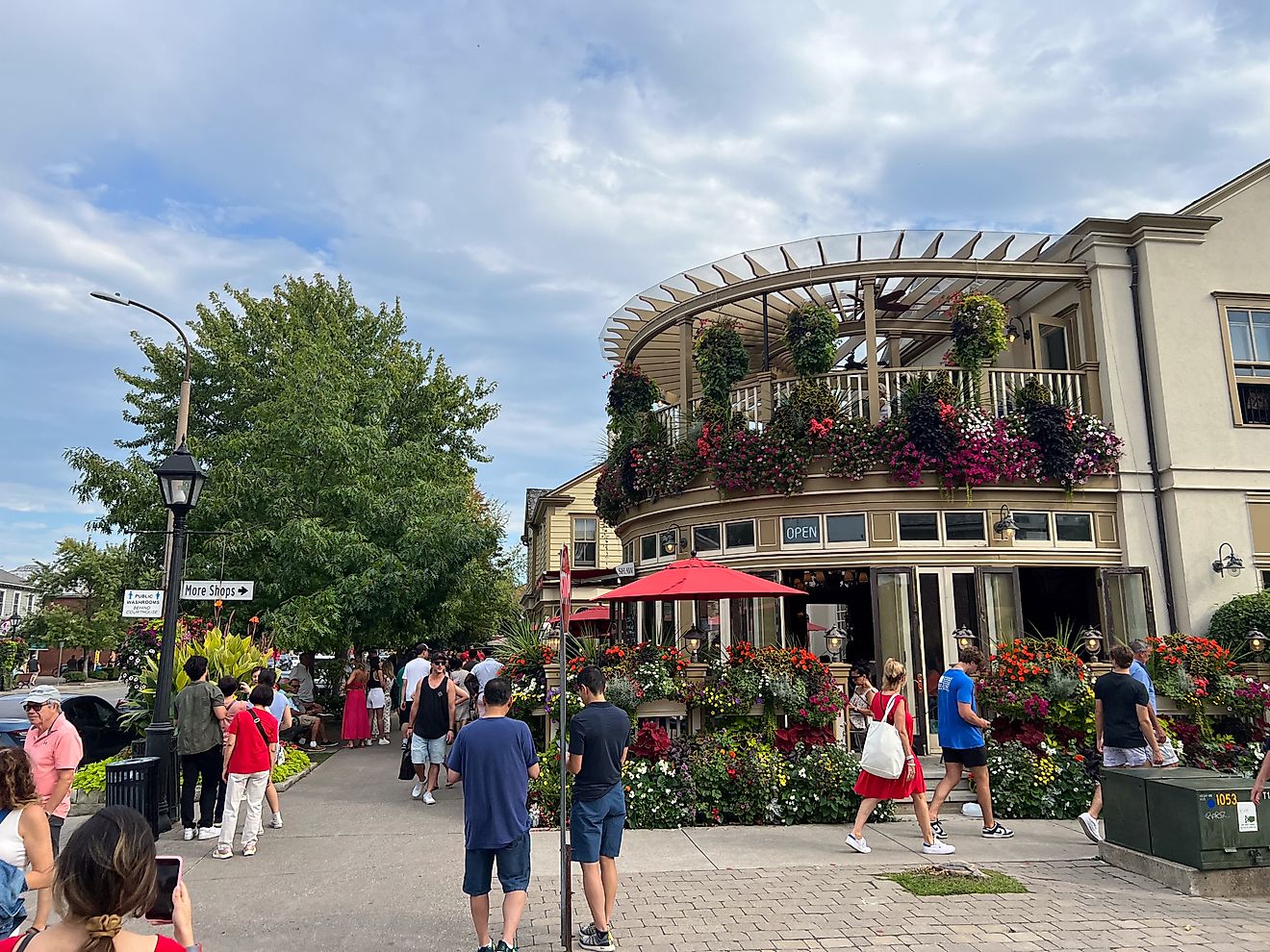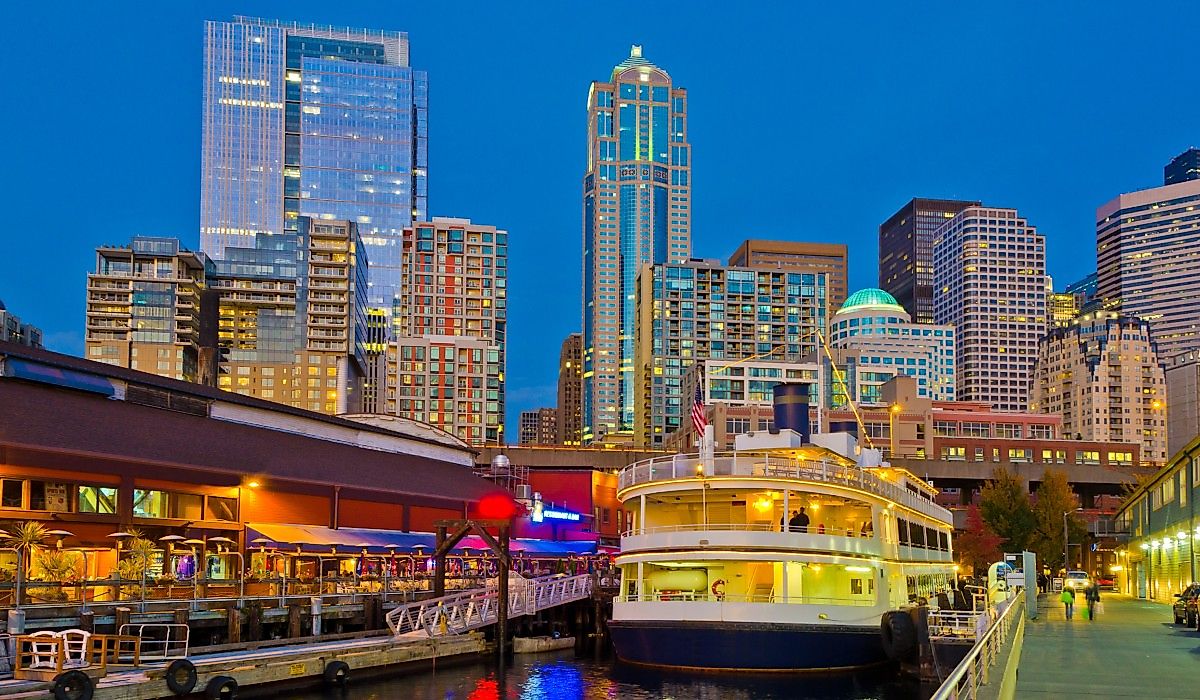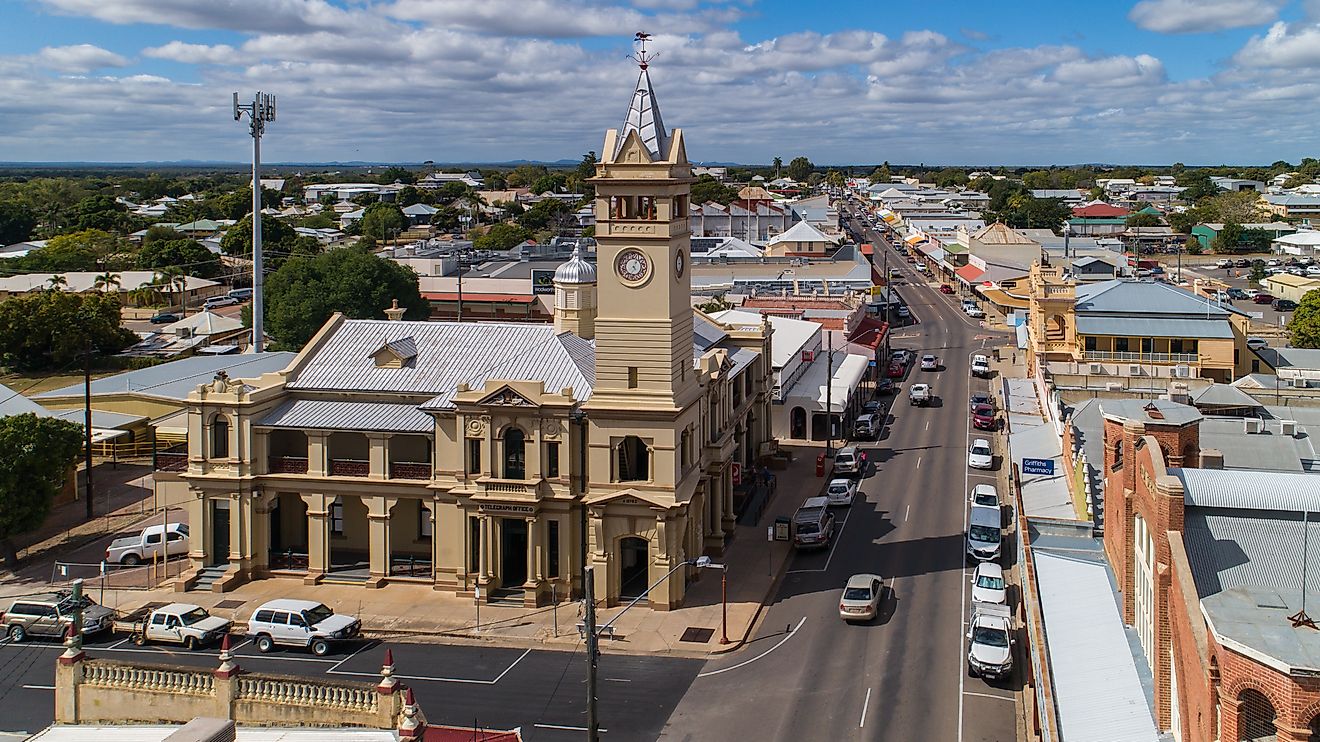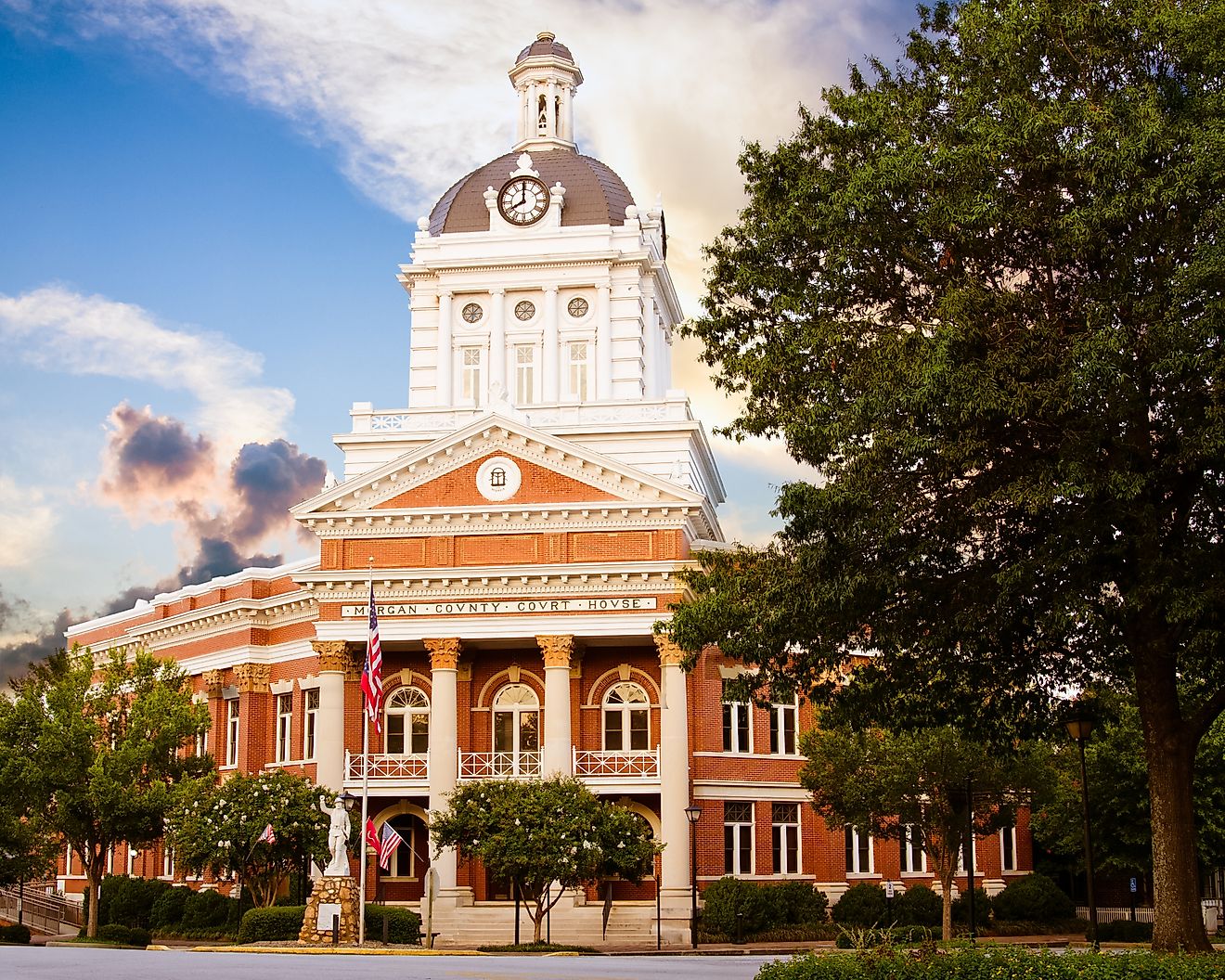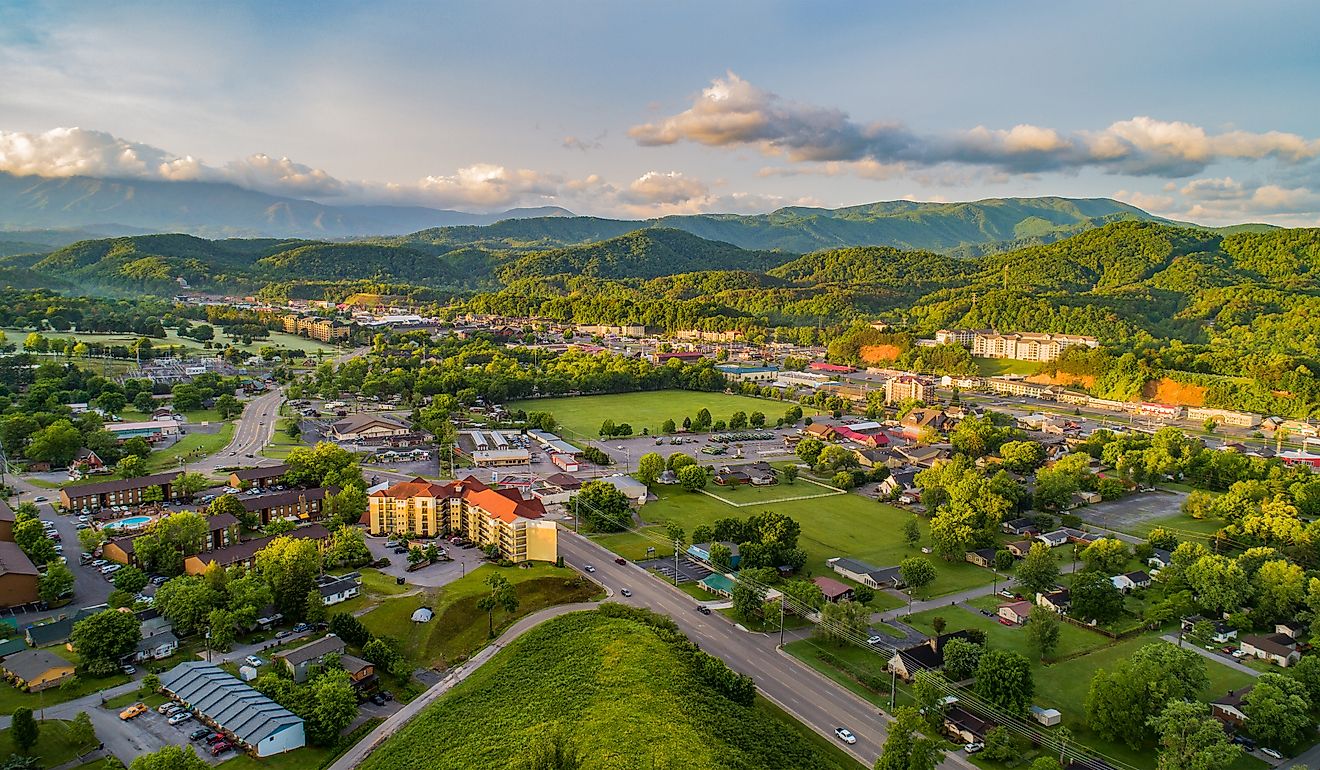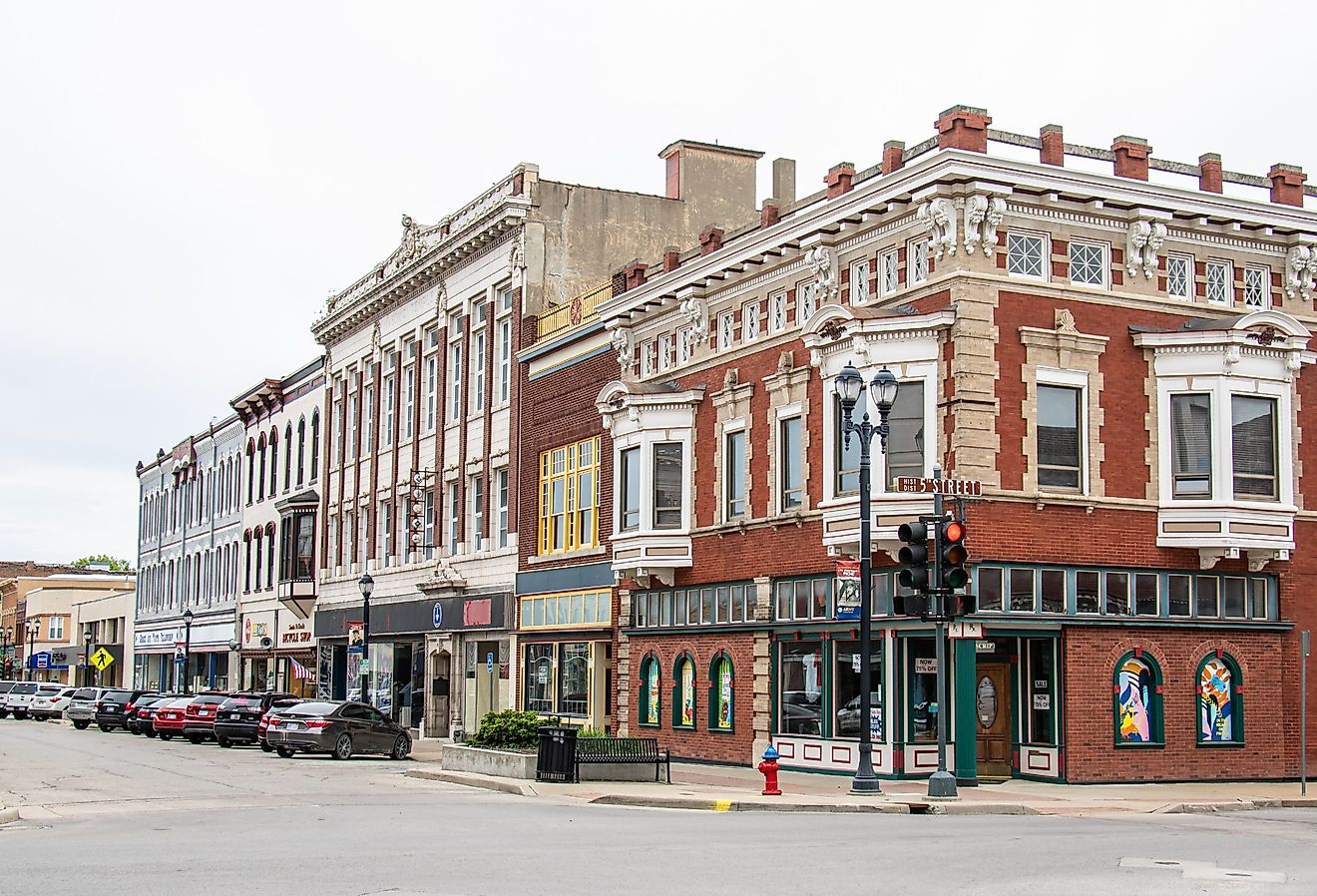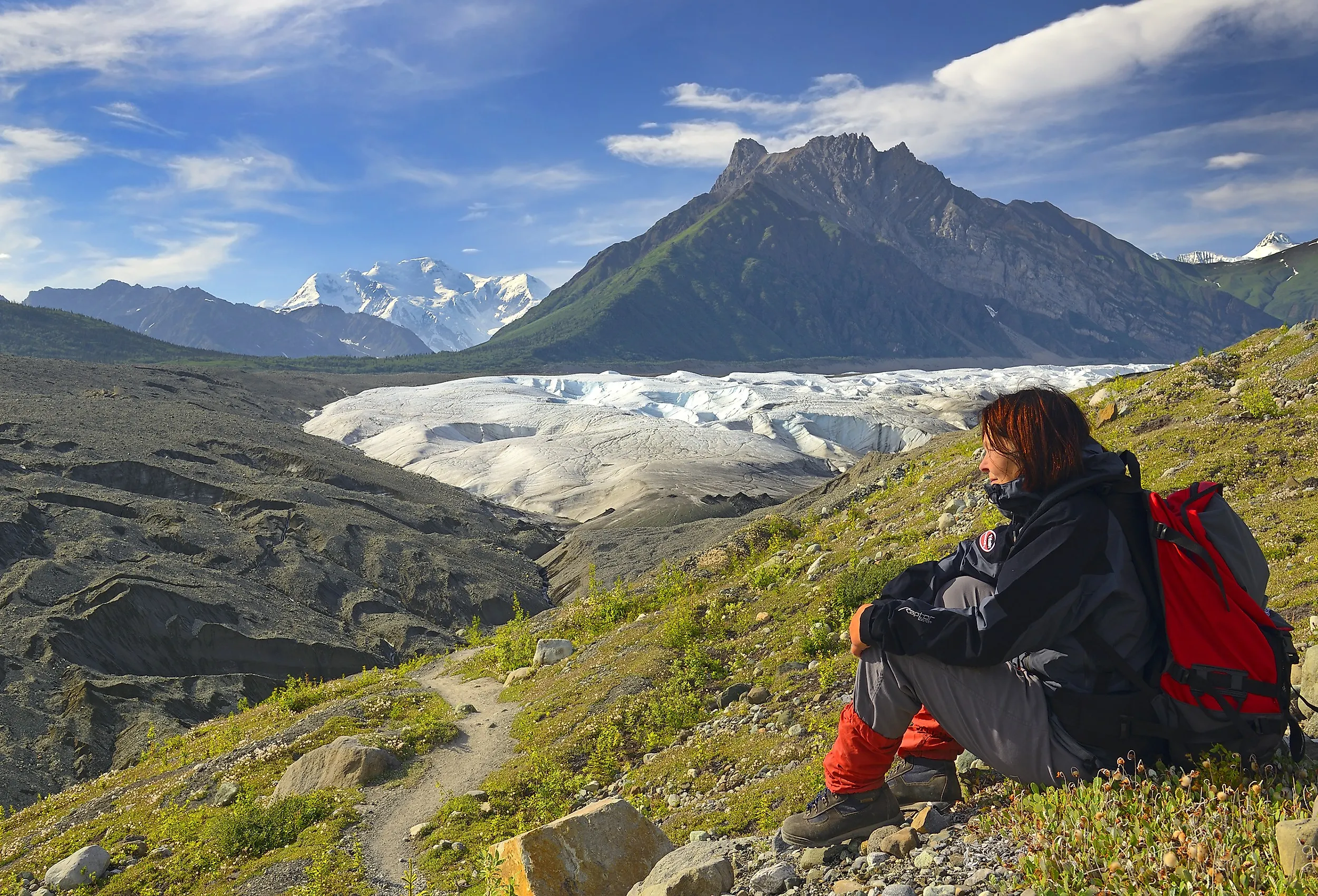
Giants of Ice and Fire In Wrangell St. Elias National Park and Preserve
A dozen volcanoes with one still steaming, thousands of glaciers, and several ghost towns scattered among a landscape that is stunning, dramatic, and cold, Wrangell-St. Elias is a truly hidden gem for park goers, and yet it is such a marvel.
From the rumbling of Mount Wrangell, braided rivers or streams formed by massive glaciers, to the abandoned towns that sprouted during the copper rush days, Wrangell-St. Elias is an isolated part of the world in Alaska, but it is also filled with incredible life and natural wonders. With its roughly 13.2 million acres, the park is the largest in the US, and even outsizes nations like Sweden.
Location and Geography
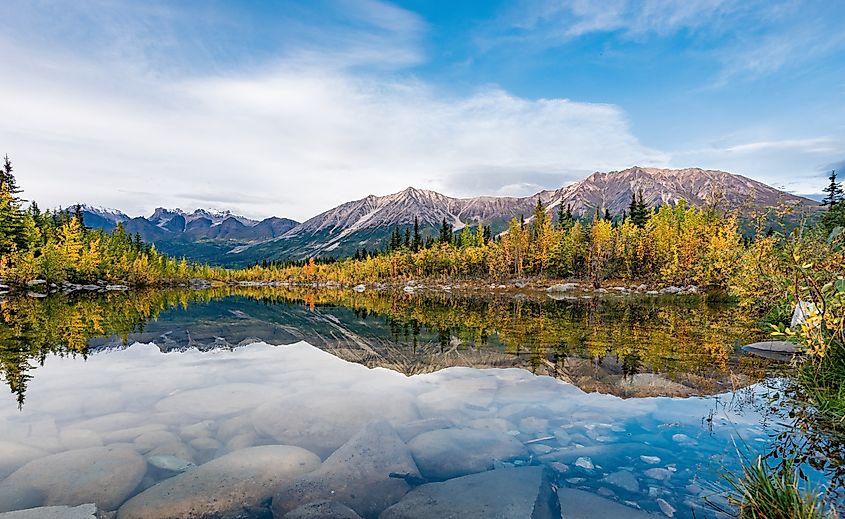
One of the reasons so few visitors visit the park is due to the location of the Wrangell-St. Elias National Park. It is east of Anchorage, with the Canadian border to the west, north of the Gulf of Alaska, and south of the Alaska Highway.
Aside from the location, getting to the park is also tricky due to the surrounding area and cold temperatures. The most reliable path to getting there is the single 60-mile gravel road, McCarthy Road. It starts from Chitina and leads right to McCarthy, and you will need a specific vehicle to travel that road, and know how to install a spare tire in case of blowouts. You can also get there through the Nabesna Road to the north.
Alternatively, you can consider flying in from Anchorage or Chitina to the park or take a shuttle from those locations, too. The most challenging is by a riverboat, where getting into the park itself will have you dealing with waters that are a few degrees above freezing.
Once inside the park, you are treated to 13.2 million acres of diverse geography to explore, including a dozen volcanoes, thousands of glaciers, and several ghost towns.
The Wrangell Volcanic Field is over 2,000 square miles and encompasses a dozen volcanoes. There are three prominent ones: Mt. Wrangell and its two sisters, Drum and Sanford, with only Mt. Wrangell being active.
Considering the cold climate, Alaska is no stranger to glaciers, and Wrangell-St. Elias National Park has over 3,121 glaciers covering 6,757 square miles of land. For perspective, that is 60% of all glaciers in the United States National Parks and five times more glacier cover than the second-most glaciated park in Alaska, Glacier Bay.
Brief History
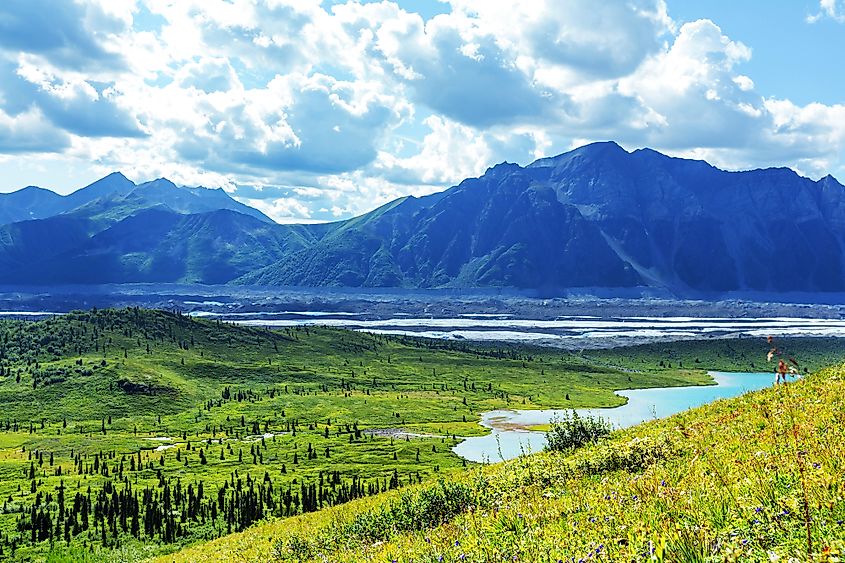
Overall, Wrangell-St. Elias National Park is relatively empty in terms of people, and this has always been the case due to the landscape of the area. Leading up to the United States' purchase of Alaska in 1867, the area was occupied by several tribes, like the Ahtna, Upper Tanana, Tlingit, and Eyak tribes, who all lived amongst the wildlife or by the rivers for centuries prior.
Industrialization eventually found its way to Wrangell-St. Elias National Park in 1900, when the area experienced a copper rush unlike any other. When prospectors surveyed the land, they discovered copper veins yielding 70% pure copper, the richest copper veins ever found, and began extraction.
The small towns around the area boomed from 1908 to 1938, where they offered amenities you couldn't find anywhere else in Alaska, such as the first X-ray machine in Kennecott's infirmary. Today, those veins have long been dried up, and the Kennecott Mines, alongside their ghost town, have become historically preserved tourist spots.
Visit The Glaciers, Volcanoes, and Ghost Towns
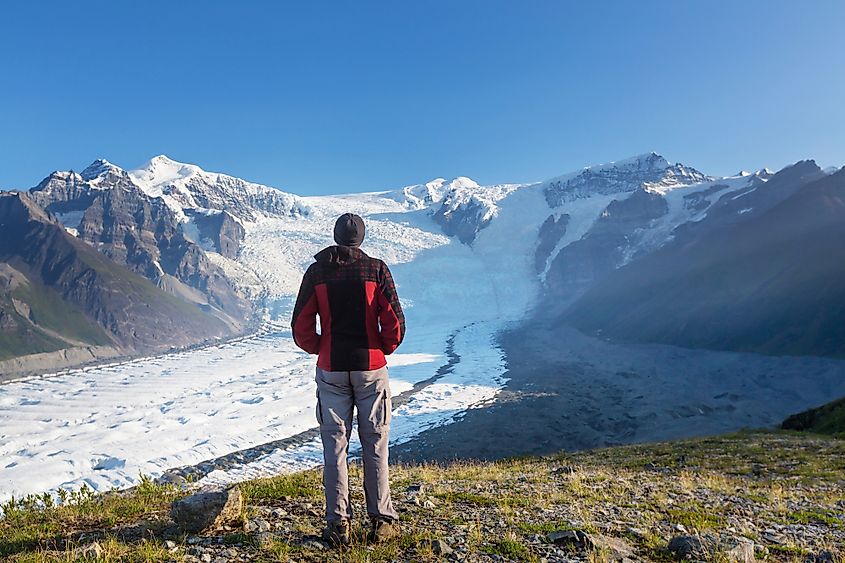
With the lack of an entry gate to enter the park, visiting Wrangell-St. Elias National Park is free in regard to entrance fees. Similarly, if you are looking to pick up a federal land pass to explore other national parks, you won't be able to buy one here either.
Even so, the 13.2 million acres of land are yours to explore, with the only additional expenses being the cost of travel, lodging, and extras like helicopter tours and souvenirs from McCarthy.
Kennecott Ghost Town

Not every national park also features a ghost town within its boundaries, or in Wrangell-St. Elias National Park's case, three. Traveling via the McCarthy Road or taking an air taxi from Chitina, the abandoned copper mining camp is all yours to explore on your own. In Kennecott, there are several interpretive exhibits and old buildings like Kennecott's General Store and Post Office. Going through some tunnels and old tramways, you can find the Bonanza Ridge. You can even step foot in the General Manager's Office, where you can observe the change of the glaciers and the mill town through panoramic photos hanging on the walls.
Other smaller attractions include the Blackburn School Railroad Depot, the Residential Cottage, the Power Plant, the Recreation Hall, and the Refrigeration Plant.
Aside from Kennecott, you can also find two other ghost towns, Bremner and Chisana. Similar to Kennecott, these smaller settlements popped up during the boom years in the hopes of people finding their fortune in gold, copper, silver, or other valuable minerals. They are abandoned or swallowed up by other communities, but they offer a small pocket of what life was like during those times.
Mount Wrangell Volcano, The Two Sisters, and Shield Volcanoes

Standing at over 14,000 feet, Mount Wrangell erupted in 1930 and was last seen active in 2003. However, you can still see steam coming from it, and there are occasional seismic rumblings.
Getting to the volcano and climbing it is tricky, as the ice-and-snow massif has no practical overland approach. The most viable solution has been getting dropped off by a small aircraft at a location to start climbing, or through Wrangell's popular flightseeing offering.
If you don't feel like flying close to or climbing it, there are a few points where you can get great views of Wrangell. First is on the Richardson Highway with the visitor center at Mile 106.8. Driving 10 miles south of the intersection can get you a prime spot. Alternatively, the Glenn Highway is a longer but more fulfilling drive, as you have a better view of Wrangell's sister volcanoes, Drum and Sanford.
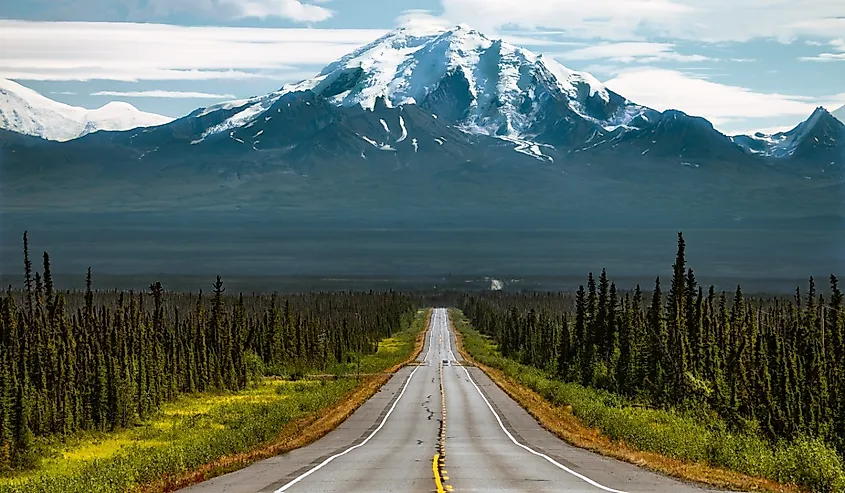
These sister peaks, Drum and Sanford, are marvels to see. For Drum, you can climb it, as it is only a 12,011-foot dormant volcano. Even so, it proves a challenge with its storybook cone and snowy crown.
Meanwhile, Sanford is Alaska's sixth-highest peak and best viewed from a distance. Standing at 16,237 feet, it dominates the northwest corner of the Wrangell Mountains. The crown of this peak is perpetually shrouded in snow and ice, and the geology of this peak isn't studied much by volcanologists for good reason. The prime issue is that the mountain has an especially dramatic shape to it. To the north, a ridge ramps towards the summit, and to the south, you have a 7,200-foot cliff forming a large amphitheater.

Lastly, there are shield volcanoes, which are scattered throughout the park. Shield volcanoes don't form into pointed mountains but rather create gentle slopes similar to the shape of a shield lying on the ground. There are 13 national parks in the United States that have these kinds of volcanoes, including Hawai'i Volcanoes National Park and the Kaloko-Honokōhau National Historic Park. In Wrangell-St. Elias National Park, most of the older volcanoes, like Capital Mountain and Tanada Peak, have eroded and lost their shape due to a combination of factors, including glacial activity.
Multiple Glaciers
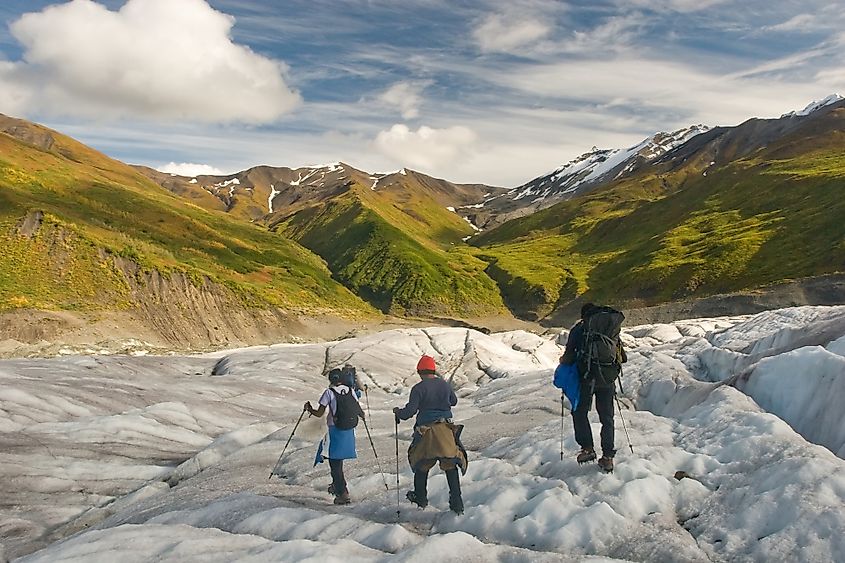
Over a third (35%) of the parkland is glaciers, and three of the 10 largest glaciers (excluding Greenland and Antarctica's ice sheets) are resting in the park: the Malaspina, the Bering, and the Hubbard Glaciers. These three glaciers are located in the southern portion of the park, where the weather is colder and the region receives heavy snowfall.
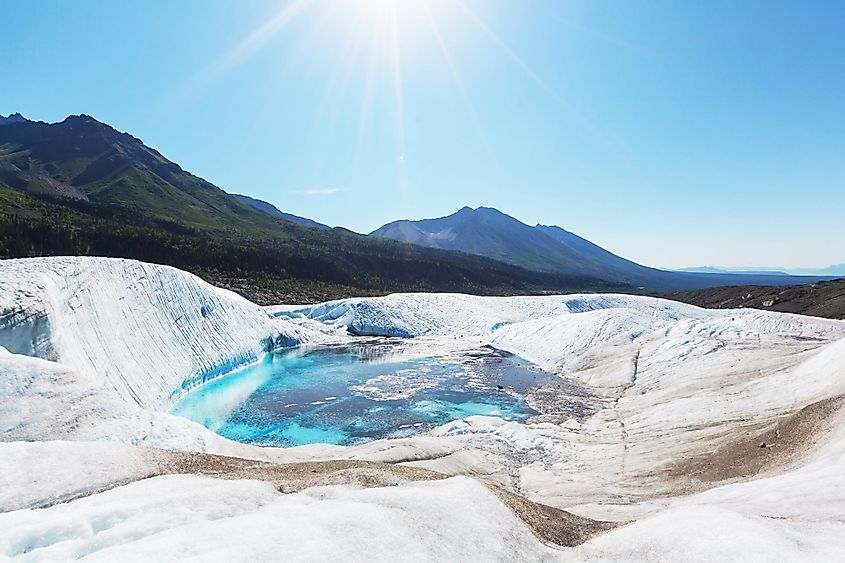
With the literal thousands of glaciers in the area, there are too many to list, but there are several key glaciers to check out. The Bagley Icefield covers multiple glaciers in its 127-mile-long and 6-mile-wide area. The Nabesna Glacier is also notable as it is the world's longest interior valley glacier at over 53 miles long. The Malaspina Glacier is North America's largest piedmont glacier, easily larger than the state of Rhode Island. Lastly, there is the Hubbard Glacier, which has waters flowing over 75 miles and calving into the sea. The Hubbard Glacier is also the longest tidewater glacier in North America.
In addition, some glaciers provide great water conditions for kayaking. One spot of note is at the foot of the Kennicott Glacier, and you can book tours through McCarthy River Tours.
Unique Natural Phenomena
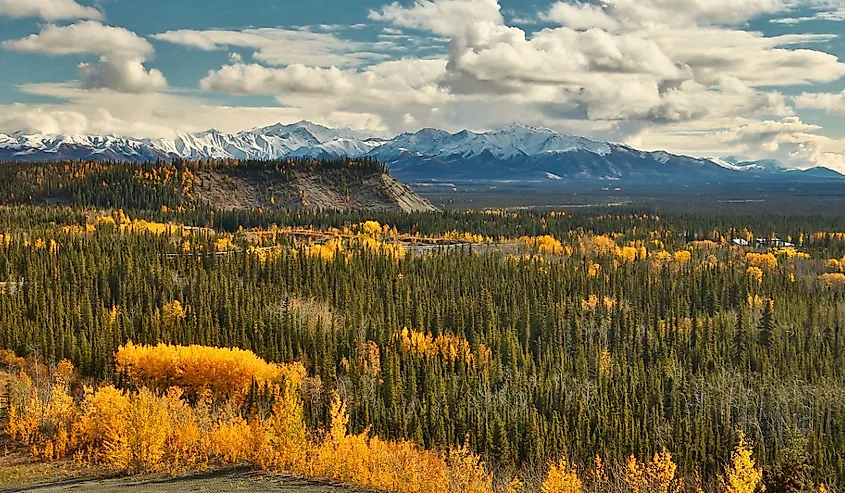
Ever since the geology was established over 200 million years ago, Wrangell-St. Elias National Park has been home to unique natural phenomena. For starters, the climate and shape of the land make it the perfect host for the boreal forest to flourish, one of the largest ecosystems in the world. Making up 13 percent of the entire world, many northern climates contain this ecosystem, which consists of a mixture of spruce, aspen, and balsam poplar forests alongside muskeg and tussocks.
Beyond that, the park itself has powerful geologic forces working constantly. If the rumblings of Mount Wrangell weren't enough of a hint, there are forces that drive the collision of crustal plates that created the dramatic landscapes that are seen throughout the park. And these will continue to be countered by the eroding power of flowing rivers and massive glaciers that can advance and retreat.
Preparing To Visit
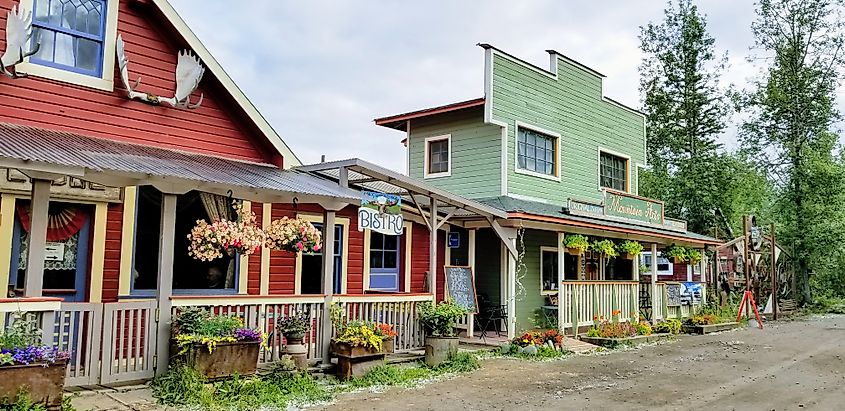
For those looking to visit the park, it pays to plan out what you want to see and do and pack accordingly. For kayaking, multiple layers of warm clothing, rain gear, and dry bags are essential. For hiking, you will want boots that can handle the terrain of the area. The sweet spot of days to visit Wrangell-St. Elias National Park is about three to four days, especially if you are exploring deeper into the park.
There are several cottages available for rent throughout the area. However, there are a handful that require advanced registration if you plan on staying there.
One of the notable spots of civilization is the town of McCarthy, a quirky community with a few hundred residents. It makes for an all-around decent resting spot, with locals gathering at the local restaurant, The Potato.
Naturally, with 13.2 million acres, you won't be able to see or experience everything the park has to offer with just one outing, but one experience that can give you a sampling of all of it is flightseeing. Several companies offer this service with varying fees, and the duration of the flights differs among them. Wrangell Mountain Air operates from late May to mid-September and is available in McCarthy. Flights can be as short as half an hour to as long as two hours. An alternative is Copper Valley Air Service, which provides year-round service from Glennallen, Alaska. Flights from Copper Valley Air Service can take over an hour.
From the frigid waters to the beautiful boreal forests, slippery glaciers, and crisp mountain air, Wrangell-St. Elias National Park is the perfect place to hide away for a week and enjoy the land's natural beauty. With the park shifting and changing year after year and the sheer size of it, it makes sense why the handful of thousands who visit keep coming back to experience something new. If you are an outdoor enthusiast, visiting this park that outsizes nations and is home to volcanoes, glaciers, and ghost towns is an absolute must.
